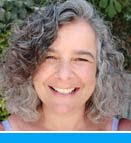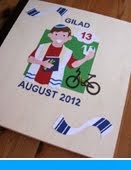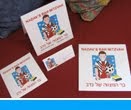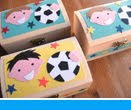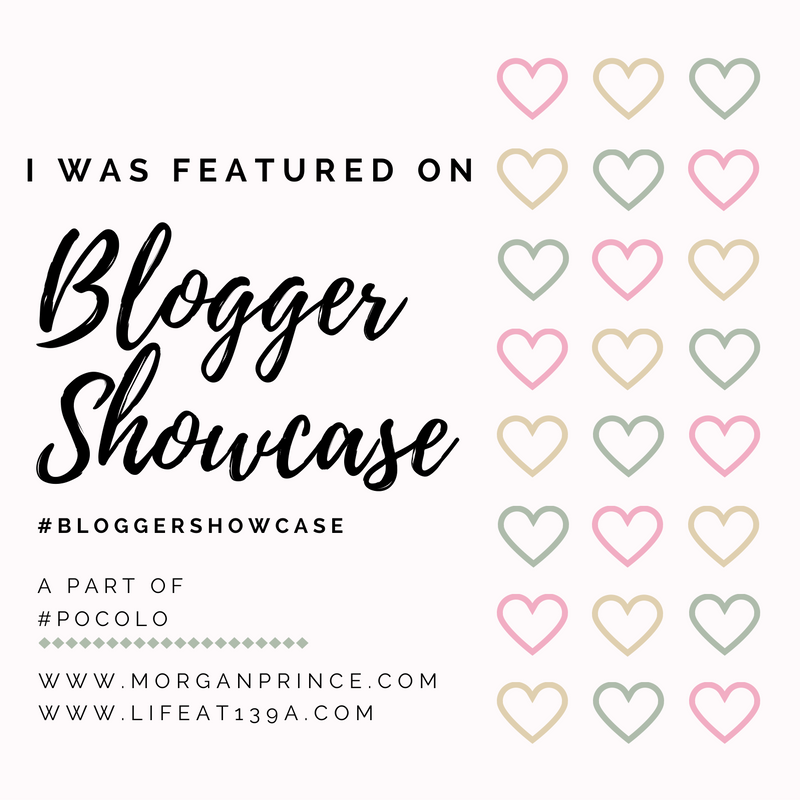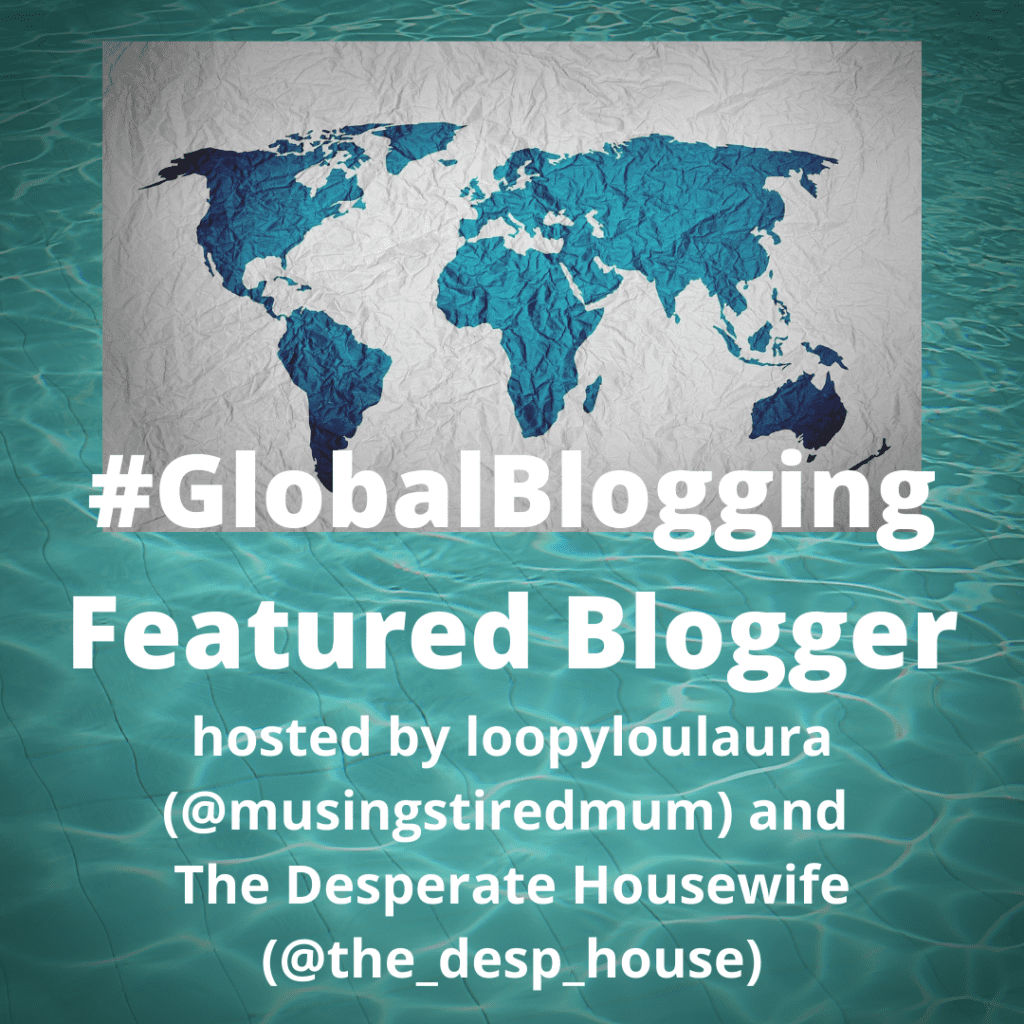We stayed at
Chai Negev on Kibbutz Revivim back in 2015 but at the time
Mitzpe Revivim, the lookout where the pioneers of the kibbutz lived until 1950, was only open for group visits. I made a return visit with my dad a few months ago and this time, because we were with a group, we were able to look around the place. I don't really like visiting places with a group. I prefer to manage my own time and decide how long I need for the visit, but it was a good opportunity to see Mitzpe Revivim and I enjoyed our time there anyway.
Mitzpe Revivim was established in July 1943 as part of a plan to examine settlement prospects in the Negev. The founding group of settlers was given about 7000 acres of land, purchased in 1935 by the
Keren Kayemet (Jewish National Fund). The settlement was initially named
Tel HaTzofim (Scout's hill) and later renamed
Revivim (rain showers). Its name is taken from the Bible, Psalm 65:11: "You (Lord) ... level its ridges, you soften it with showers." For seven years Revivim was the southernmost Jewish settlement in Israel.
The settlers faced many difficulties in the first years. They struggled against the heavy heat, aridity, lack of water and means of subsistence. A single-minded engineer named Dov Kublanov made many attempts to accumulate the water of the Revivim River, creating canals, a 1.2m dam and a cistern lined with tar. Unfortunately flood waters destroyed the canal walls, the reservoirs drained away into the ground and the system was abandoned. Eventually water was discovered at a depth of over 100m and a tractor was modified to pump it out. Recording rainfall, and experimenting in various ways, the settlers managed to find enough water to grow produce in the sand. They succeeded in transforming the research station into a
kibbutz, a communal settlement, in 1948, following Israeli Independence.
During the Israeli
War of Independence, Revivim fell behind Egyptian lines for several months. The siege was only lifted during
Operation Horev at the end of December 1948. Members of the kibbutz lived in underground bunkers and food was supplied by air and land convoys. Thirty members of the kibbutz survived the war, while eight were killed in raids and pitched battles with Egyptian forces. Today you can view the trenches, bunkers and planes that brought arms and supplies to Revivim.
In the 1950s Revivim moved into new accommodation, very near to the original site. Fresh water arrived for the first time in 1955. Today the kibbutz thrives on a large olive crop, about 8000 acres of arable farming, as well as a dairy farm, a chicken hatchery, a fish growing farm and other non-agricultural industries. The old dwellings of the first settlers have been reconstructed and visitors can learn the story of this incredible community and its successful role in developing Jewish settlement and desert agriculture in the Negev, as well as the events of the 1948 war.
We saw how the settlers lived in the early days by exploring the "castle" (all of the Negev
mitzpim - lookouts - were built like tiny castles and included a two-story security edifice within a courtyard surrounded by a wall made of stone), residential rooms, a radio room, a weapons room and the dining room. We looked at the tools and tractors used for agriculture, visited the aircraft compound and the dam room which tells the story of the settlers many attempts to accumulate water to irrigate the land with fresh water. The observation tower offered a wonderful view of the vast areas of Kibbutz Revivim, its fields and the large olive vineyard (bottom photo), as well as the bunkers and fortifications used through 1948. (Please make sure you click on the photo to appreciate just how incredible the view is).
There are two caves at Mitzpe Revivim which are actually water cisterns that were originally built by the
Nabateans. The larger cave housed the settlers during their first year in Revivim and later became a field hospital. Pipes - which have become the symbol of the museum - were hastily erected as support when settlers needed to build a back wall in the cave.
The smaller cistern wasn’t discovered until 1948, when members dug the ground for a bomb shelter. This cistern became a command post during the War of Independence in 1948 and contains some vintage weapons and an escape hatch.
The establishment of Kibbutz Revivim and two similar outposts,
Mitzpe Gvulot and
Beit Eshel, helped sway the United Nations to include the Negev in the State of Israel. The
Morrison-Grady plan, announced in July 1946, proposed dividing the country into three parts and leaving Jerusalem and the Negev out of Jewish hands, prohibiting settlement in the area. Instead, the area was to remain under British rule.
In 1943 Jewish leaders in Palestine sent little groups deep into the Negev, not only to conduct agricultural research, but also to gain a foothold on the land. In 1946, on the night of 5-6th October, the famous "
Night Of The Eleven", eleven new settlements were formed overnight in order to assure a Jewish presence in the area prior to the
partition of Palestine. None of the settlements were ever removed by the British and all but one of the settlements exist to this day (
Kfar Darom was dismantled as part of
Israeli disengagement from Gaza).
* This post has been shared on
All Seasons,
The Good. The Random. The Fun.,
Wordless Wednesday (on Tuesday),
Tuesday's Treasures,
Our World Tuesday and
My Corner of the World.















































